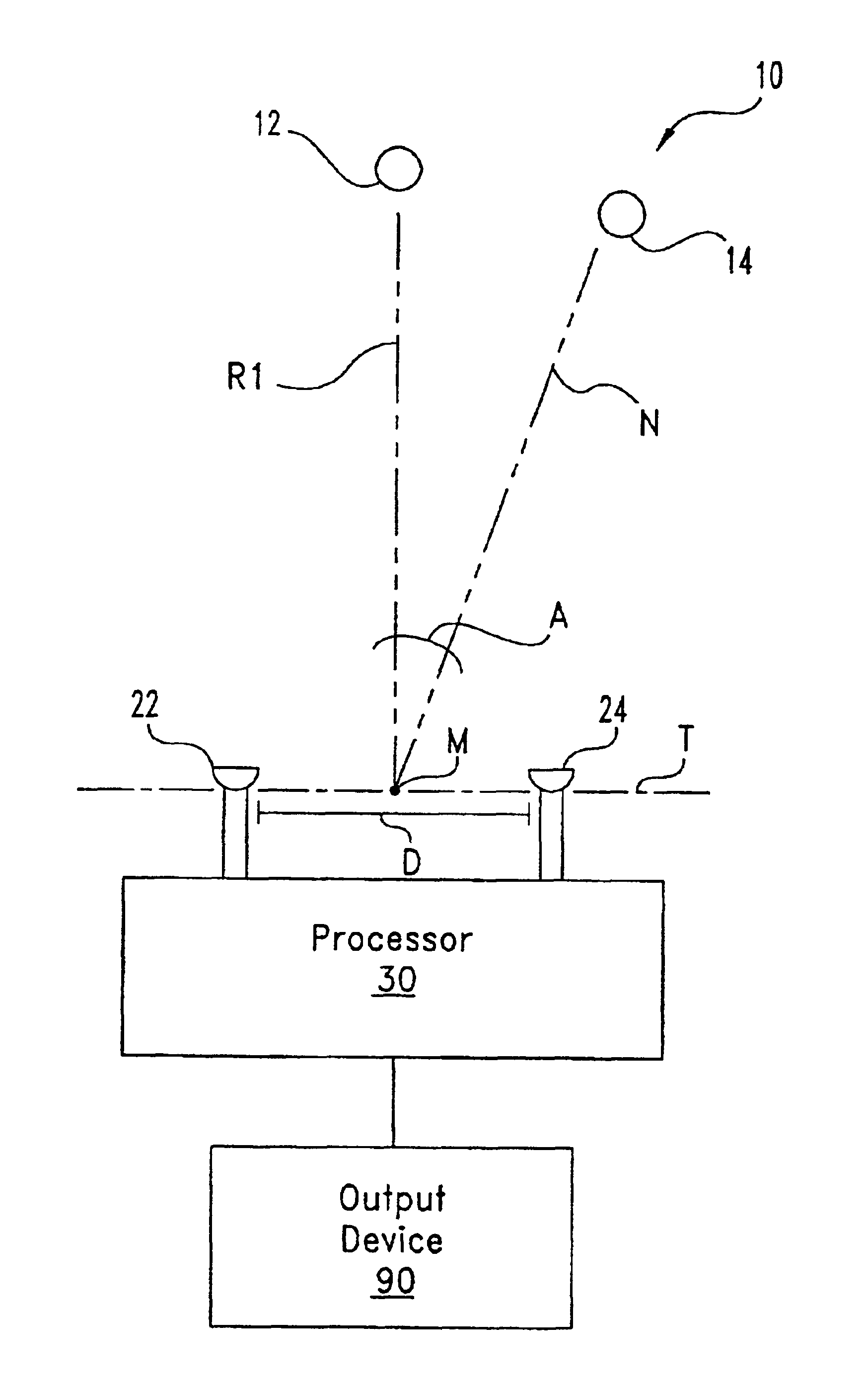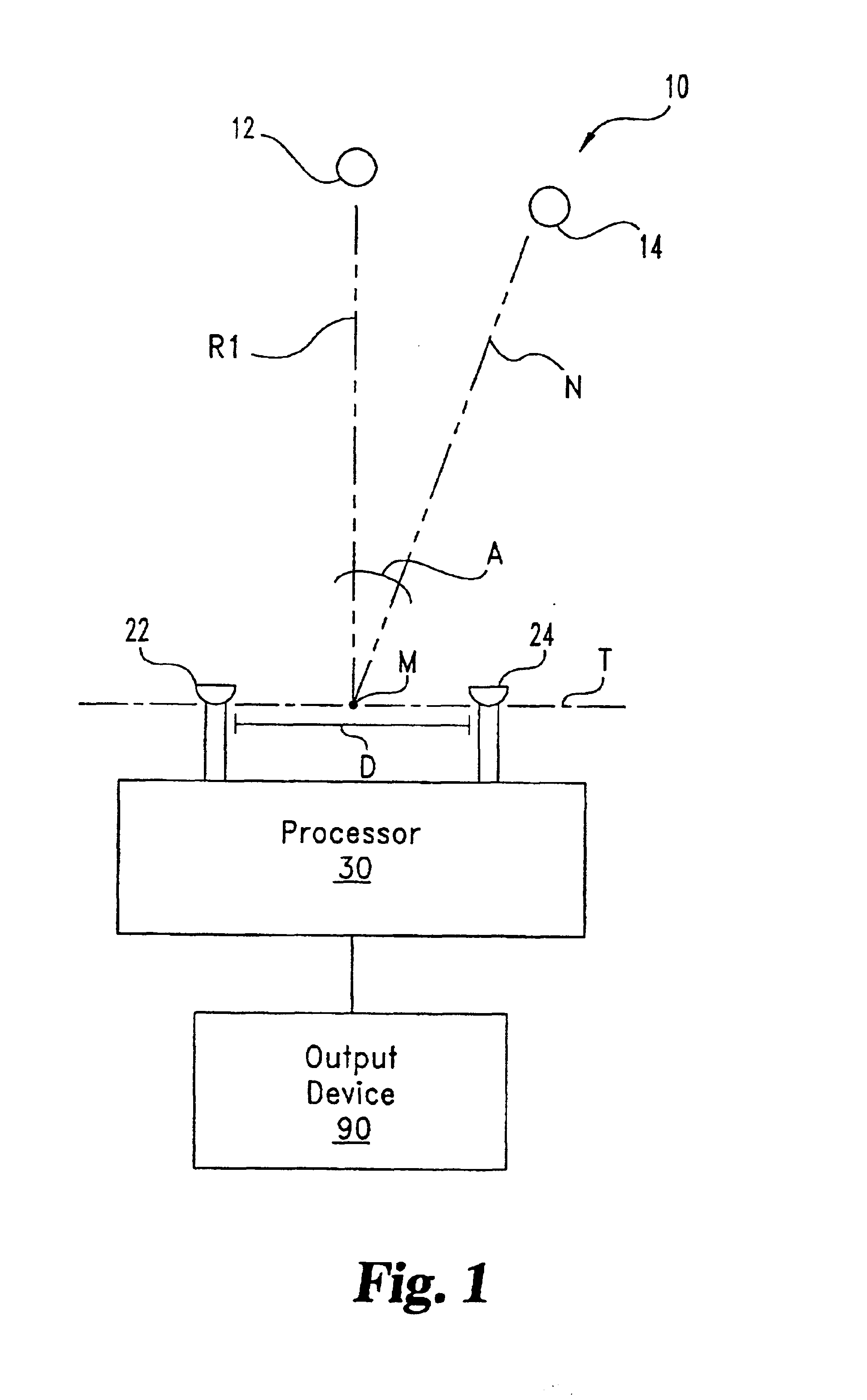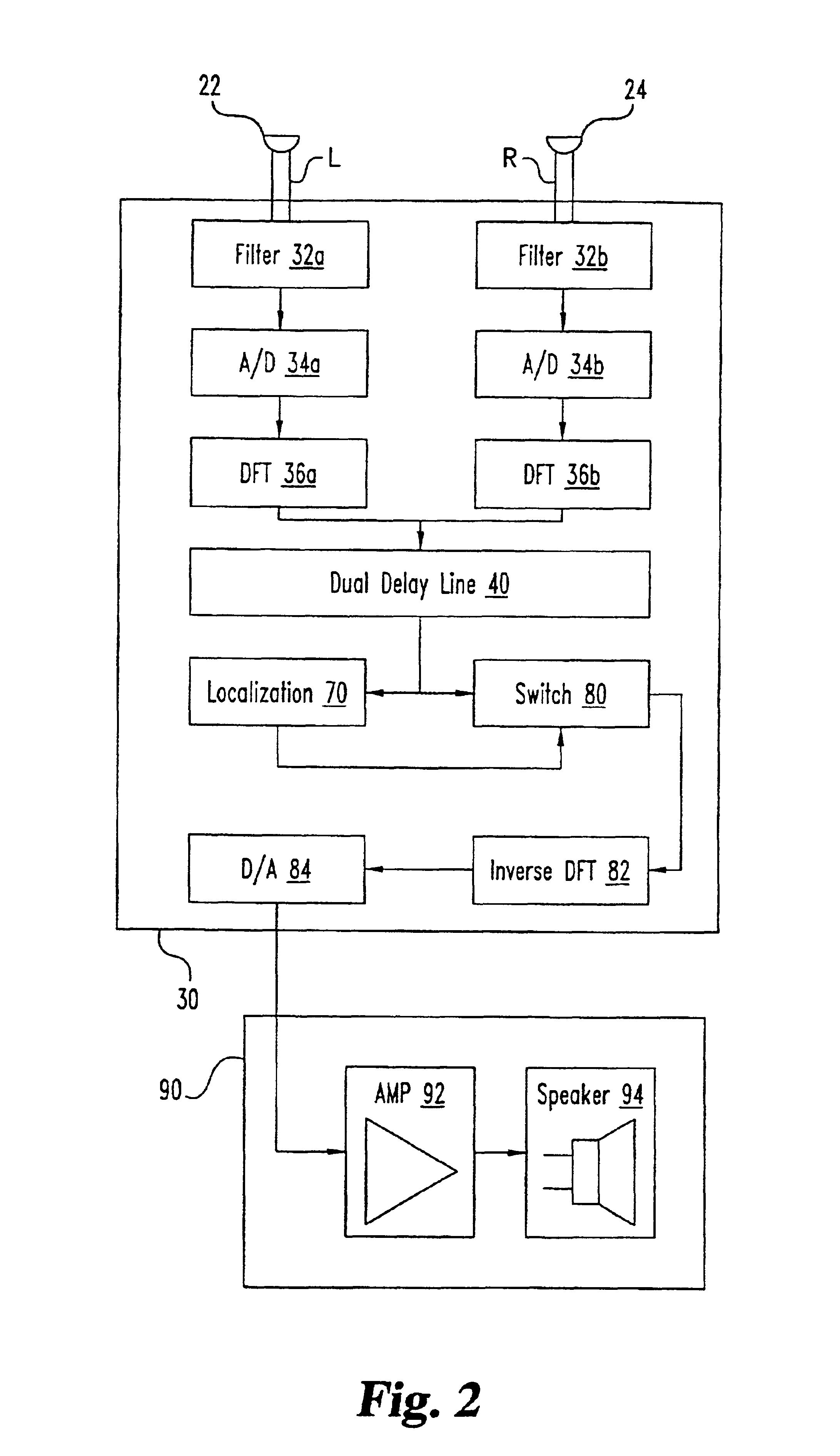Binaural signal processing using multiple acoustic sensors and digital filtering
a technology of acoustic sensors and binaural signals, applied in the field of binaural signal processing using multiple acoustic sensors and digital filtering, can solve the problems of inability to selectively amplify a desired sound with hearing aid devices, difficulty in extracting a desired signal in the presence of interfering signals, and separation of desired sound from unwanted sound by hearing aid devices, etc., to facilitate the extraction of a desired signal and enhance the localization of multiple acoustic sources
- Summary
- Abstract
- Description
- Claims
- Application Information
AI Technical Summary
Benefits of technology
Problems solved by technology
Method used
Image
Examples
example one
[0122]A Sun Sparc-20 workstation was programmed to emulate the signal extraction process of the present invention. One loudspeaker (L1) was used to emit a speech signal and another loudspeaker (L2) was used to emit babble noise in a semianechoic room. Two microphones of a conventional type were positioned in the room and operatively coupled to the workstation. The microphones had an inter-microphone distance of about 15 centimeters and were positioned about 3 feet from L1. L1 was aligned with the midpoint between the microphones to define a zero degree azimuth. L2 was placed at different azimuths relative to L1 approximately equidistant to the midpoint between L1 and L2.
[0123]Referring to FIG. 5, a clean speech of a sentence about two seconds long is depicted, emanating from L1 without interference from L2. FIG. 6 depicts a composite signal from L1 and L2. The composite signal includes babble noise from L2 combined with the speech signal depicted in FIG. 5. The babble noise and spee...
example two
[0125]Experiments corresponding to system 410 were conducted with two groups having four talkers (2 male, 2 female) in each group. Five different tests were conducted for each group with different spatial configurations of the sources in each test. The four talkers were arranged in correspondence with sources 412, 414, 416, 418 of FIG. 14 with different values for angles 412a, 414a, 416a, and 418a in each test. The illustration in FIG. 14 most closely corresponds to the first test with angle 418a being −75 degrees, angle 412a being 0 degrees, angle 414a being +20 degrees, and angle 416a being +75 degrees. The coincident patterns 612, 614, 616, and 618 of FIG. 18 also correspond to the azimuth positions of −75 degrees, 0 degrees, +20 degrees, and +75 degrees.
[0126]The experimental set-up for the tests utilized two microphones for sensors 22, 24 with an inter-microphone distance of about 144 mm. No diffraction or shadowing effect existed between the two microphones, and the inter-micr...
PUM
 Login to View More
Login to View More Abstract
Description
Claims
Application Information
 Login to View More
Login to View More - R&D
- Intellectual Property
- Life Sciences
- Materials
- Tech Scout
- Unparalleled Data Quality
- Higher Quality Content
- 60% Fewer Hallucinations
Browse by: Latest US Patents, China's latest patents, Technical Efficacy Thesaurus, Application Domain, Technology Topic, Popular Technical Reports.
© 2025 PatSnap. All rights reserved.Legal|Privacy policy|Modern Slavery Act Transparency Statement|Sitemap|About US| Contact US: help@patsnap.com



